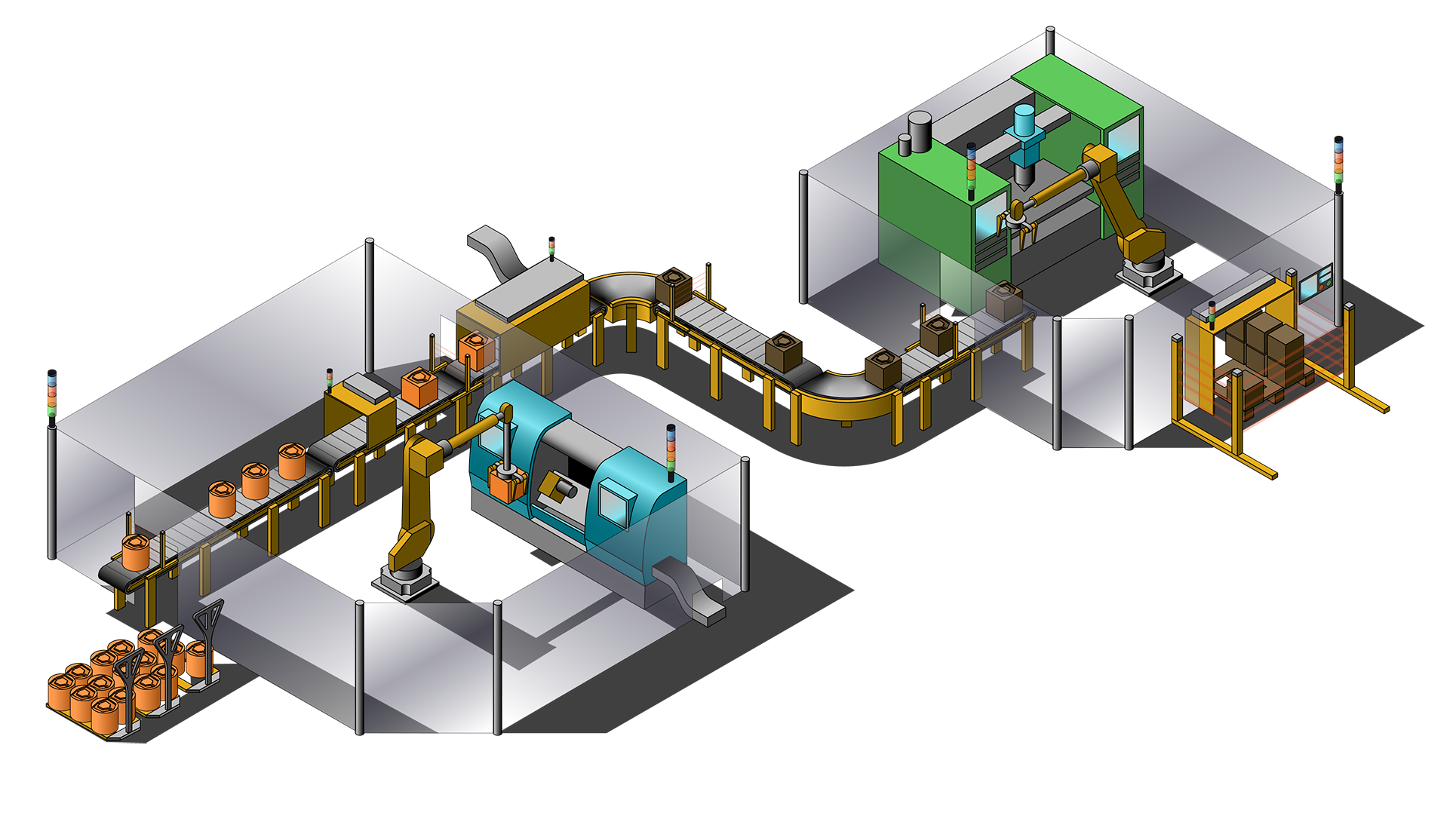Investing in robotization is a big step for a company. Especially when so far many mechanical operations were performed by employees. However, in rapidly growing companies, especially manufacturing, repeatability of actions and the speed of their implementation on a daily, monthly, and annual scale results in a significant increase in revenue. After all, faster manufacturing, packaging, and distribution times mean lower product costs.
The implementation of industrial robots is particularly important when:
- the worker must perform monotonous or intensive physical work which may involve permanent loss of or damage to health,
- the worker is particularly exposed to chemical and dangerous substances,
- the process must be carried out accurately and repeatable.

The implementation of industrial robots, of course, does not mean the complete elimination of the human factor - machine operators, programmers, maintenance engineers, or technicians are also necessary for the industry. Without them, the production environment could not function smoothly. On the other hand, companies also face a deficiency of workers - in this situation, robotization will fill the production space not occupied by humans.
It is also worth noting that in many of the processes complete automation is not possible. In such a situation comes the implementation of cobots - or cooperating robots that perform activities directly with a human, complementing each other's tasks. This type of robot is most often used in the electronics industry.
We have described industrial processes which are worth robotizing in the company - check which ones can be implemented in your company.
Pick and place
As part of a production line, the pick & place process is used for interleaving, sorting, stacking, and packaging parts, among other things. Repetitive handling of workpieces in a high-performance production environment must be fast. For this purpose, SCARA robots are used, among others. This seemingly small device features by high speed (one of the highest among all industrial robots). The moving velocity is, of course, dependent on the type of process, the tools used, and the associated equipment.
What are the advantages of SCARA robots, and in which industries are they worth implementing?
SCARA robots have high repeatability below 0.015 mm due to their unique design. Their structure allows higher speeds compared to 5 or 6 axis robots with similar payloads. These features make SCARA robots very well suited for precision assembly, dispensing, parts handling, or packaging applications. Moreover, cooperation with high-speed vision systems enables their use in sorting processes and product quality control. Besides, the compact design of these types of manipulators and their different assembly variants enable the creation of complex robot stations. The advantages of SCARA robots are appreciated by the electronics, food, confectionery, automotive, and related industries.
Norbert Polek, Robotics Engineer ATMAT
Subtractive manufacturing
Milling and deburring are surface treatment processes that remove the excess material remaining on a component, whether after injection molding or other manufacturing processes. Both metal and plastic products can be milled or deburred.
Grinding, honing, lapping, and polishing can also be applied to steel after milling. These are precision processes that require flexibility from the robot. That is why an industrial robot should be individually selected and programmed depending on the type of production line and product.
In which industries are deburring used and why is this process not commonly implemented in companies?
The deburring process is used mainly in the foundry industry and in companies that use injection molds for the production of products. The implementation of a robotic deburring station, in addition to a suitable robot, requires the use of several accessories that enable precise machining of workpieces. They make it possible for the robot to "see" the burr and properly remove it. Unfortunately, advanced stations require large financial outlays. On the other hand, such an investment makes it possible to increase the efficiency of the plant and the quality of products.
Norbert Polek, Robotics Engineer ATMAT
As one of the few integrators, we provide industrial robot programming for deburring and milling.
Palletizing and handling
Larger workloads and a wider working range, such as in palletizing, require industrial robots with a large payload and more axes. Depending on the model, the articulated robots can lift workpieces weighing between 1 kg and 2 tonnes. With these robots, it is possible to palletize and move products together with the product loading, as well as to move large-sized products.
Welding
According to the information posted on polskiprzemysl.pl* developed based on a report from HowToRobot.com, welding is one of the most commonly robotized processes. The industrial robots are being implemented where welding is executed in series. They reduce safety measures (in case the operation would be performed traditionally). Moreover provides repeatability of production cycles while reducing the time of the entire process.
*https://polskiprzemysl.com.pl/automatyzacja-i-robotyka/rynek-automatyki-i-robotyki-w-polsce/
Do not know if the implementation of an industrial robot will work in your company? We invite you to contact us! We will help you find the optimal solution to achieve your goals.
Authors: Kinga Bugno, Norbert Polek

